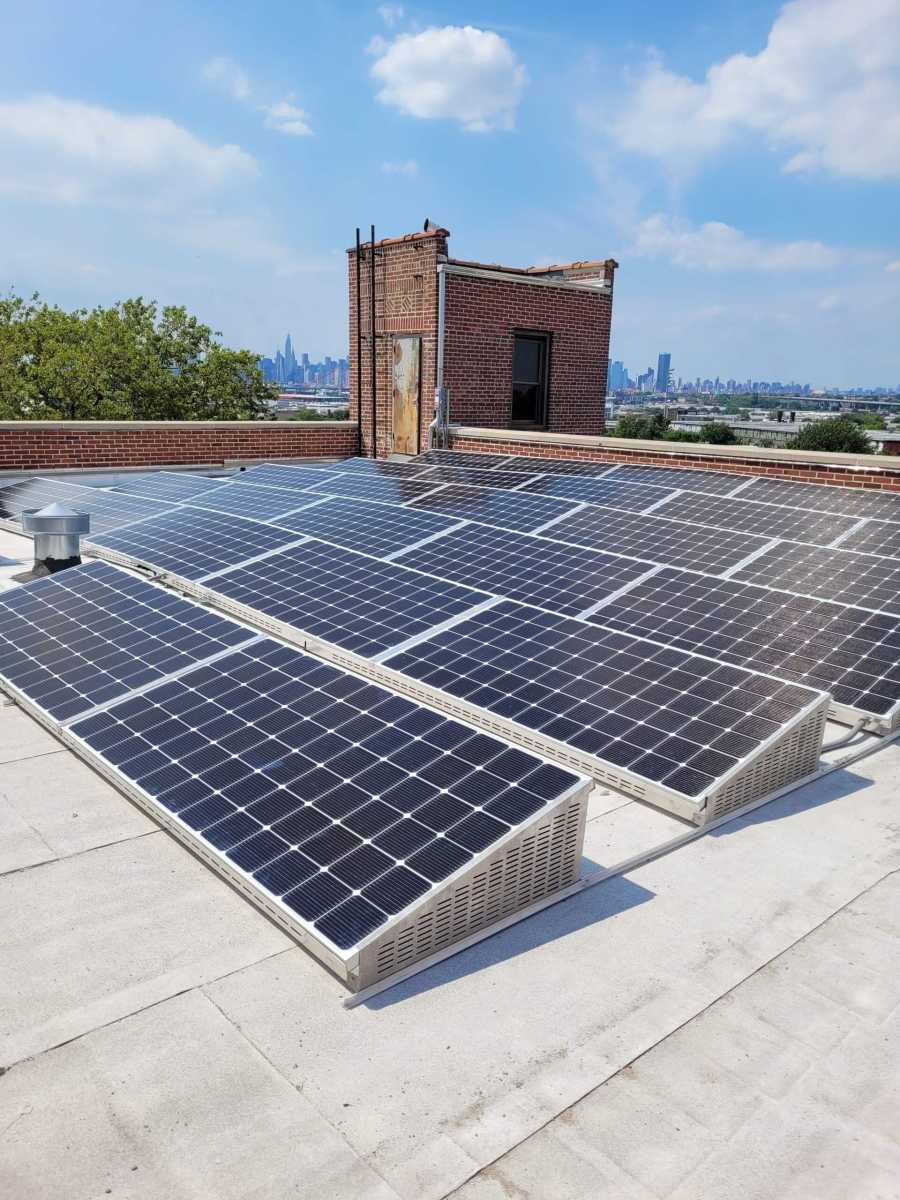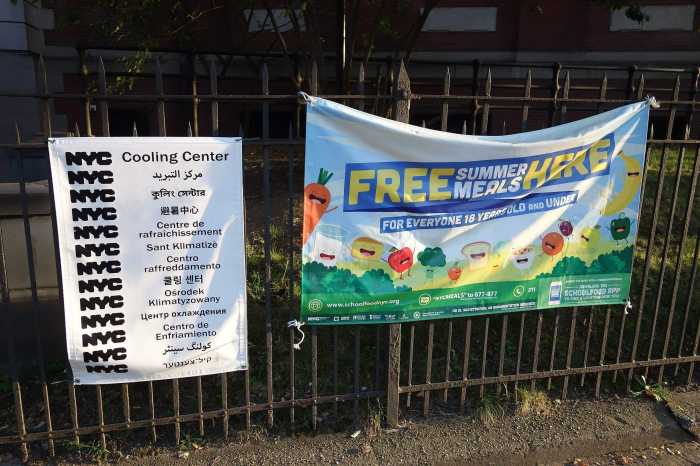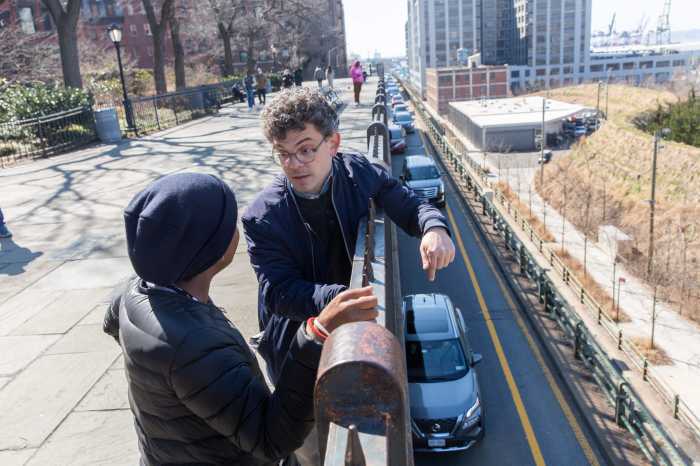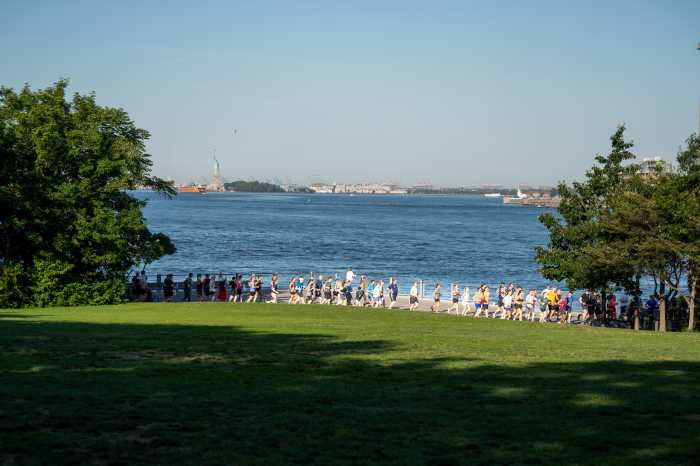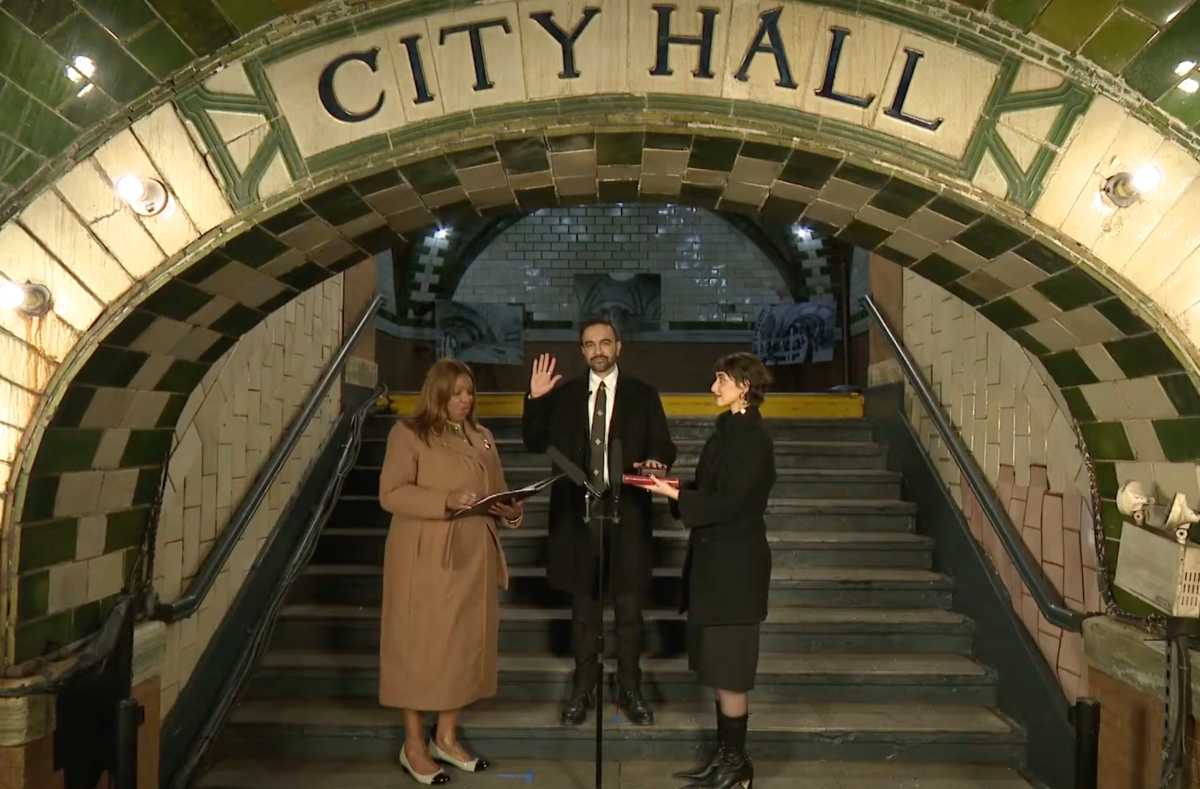The roofs of six firehouses in Brooklyn and Queens are now outfitted with shiny new solar panels, city officials told Brooklyn Paper exclusively on Monday, cutting down their demand on the grid and ensuring the lights stay on during power outages.
“FDNY firehouses are among the most critical infrastructure in our city, and it’s imperative that its key functions remain operable in the face of power loss,” said Department of Citywide Administrative Services Commissioner Dawn M. Pinnock. “We are proud to work with NYPA to bring these solar upgrades to firehouses that need it the most in our pursuit to better serve all New Yorkers.”
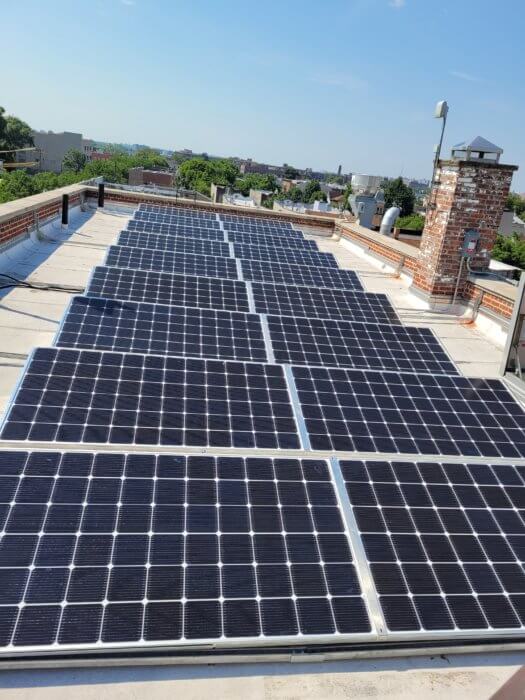
Three Brooklyn stations — Engine Company 254 & Ladder 153 in Gravesend, Engine Company 236 in East New York, and Engine Company 309 & Ladder 159 in Flatlands — were chosen for the upgrade because they had recently experienced power outages, according to the Department of Citywide Administrative Services. Firehouses in Astoria, Ridgewood, and Jamaica were selected for the same reason.
The $2.4 million project was a collaboration between DCAS, the FDNY, and the New York Power Authority as part of the city’s work to reduce emissions from government buildings and operations, and to ensure infrastructure resiliency in times of crisis — like storms or summer blackouts. Day-to-day, the panels will generate a percentage of the station’s needed electricity — how much depends on the size of the firehouse and how many panels could fit on the roof.
Each firehouse also has a battery storage system, which will store enough electricity to power “critical loads” like communications systems, roll-up doors, and more for up to eight hours during blackouts. If the sun is shining, the panels can keep generating electricity to keep the lights on for even longer, according to a DCAS representative.
“Firehouses are an integral part of keeping our city safe and remaining operational is critically important to the safety of our city,” said FDNY commissioner Laura Kavanagh. “We are happy to partner with NYPA to lower our carbon footprint, and bring solar upgrades to more of our firehouses. We know this is a pathway to a more sustainable, safer city.”
DCAS plans to expand the solar program to more firehouses, police stations, and other critical community buildings, like libraries, in the coming years.
Last year, the Coney Island Library debuted a new solar-powered backup system — as part of a resiliency effort funded by the Governor’s Office of Storm Recovery. Three other southern Brooklyn libraries – in Gerritsen Beach, Mill Basin, and Sheepshead Bay — also planned to install solar panels.
Like the new firehouse systems, the library solar panels and battery storage systems would help keep the lights on in the event of a blackout — and the facilities, which all sit in flood-prone nabes, would remain open for residents to warm up and charge their phones in the event of a major storm or emergency.
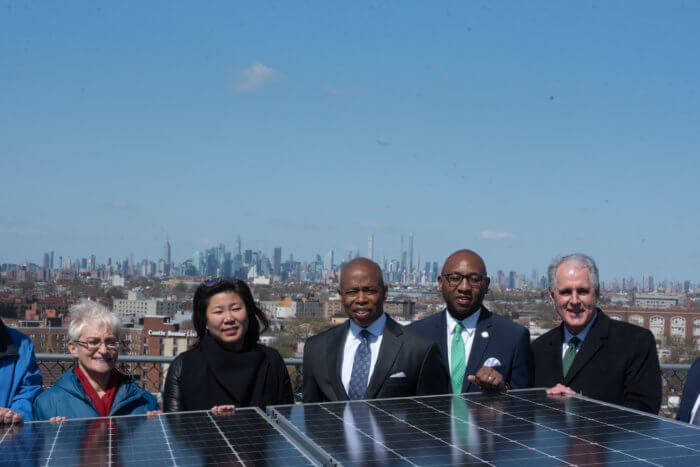
As climate change continues to cause more intense storms and weather extremes, the city is working to reduce its carbon emissions by by 80% by 2050. Residential and commercial buildings are an enormous source of greenhouse gas emissions, and while measures are in place to slowly bring down the carbon footprints of new construction, retrofitting existing buildings is a critical part of meeting that goal.
City government-owned buildings pushed 1.86 million metric tons of greenhouse gases into the air in 2020, according to city data – more than any other city-owned resource, including wastewater treatment facilities, transportation, and waste facilities. Installing solar panels and other renewable energy resources cuts back on the amount of natural gas and electricity each building uses.
“Making our city more resilient and sustainable is a key priority of my administration, and we are already ‘Getting Stuff Done,'” said Mayor Eric Adams. “By installing these solar panels on six of our firehouses, we can not only reduce strain on our electric grid, but also improve air quality and lower our carbon footprint.”


